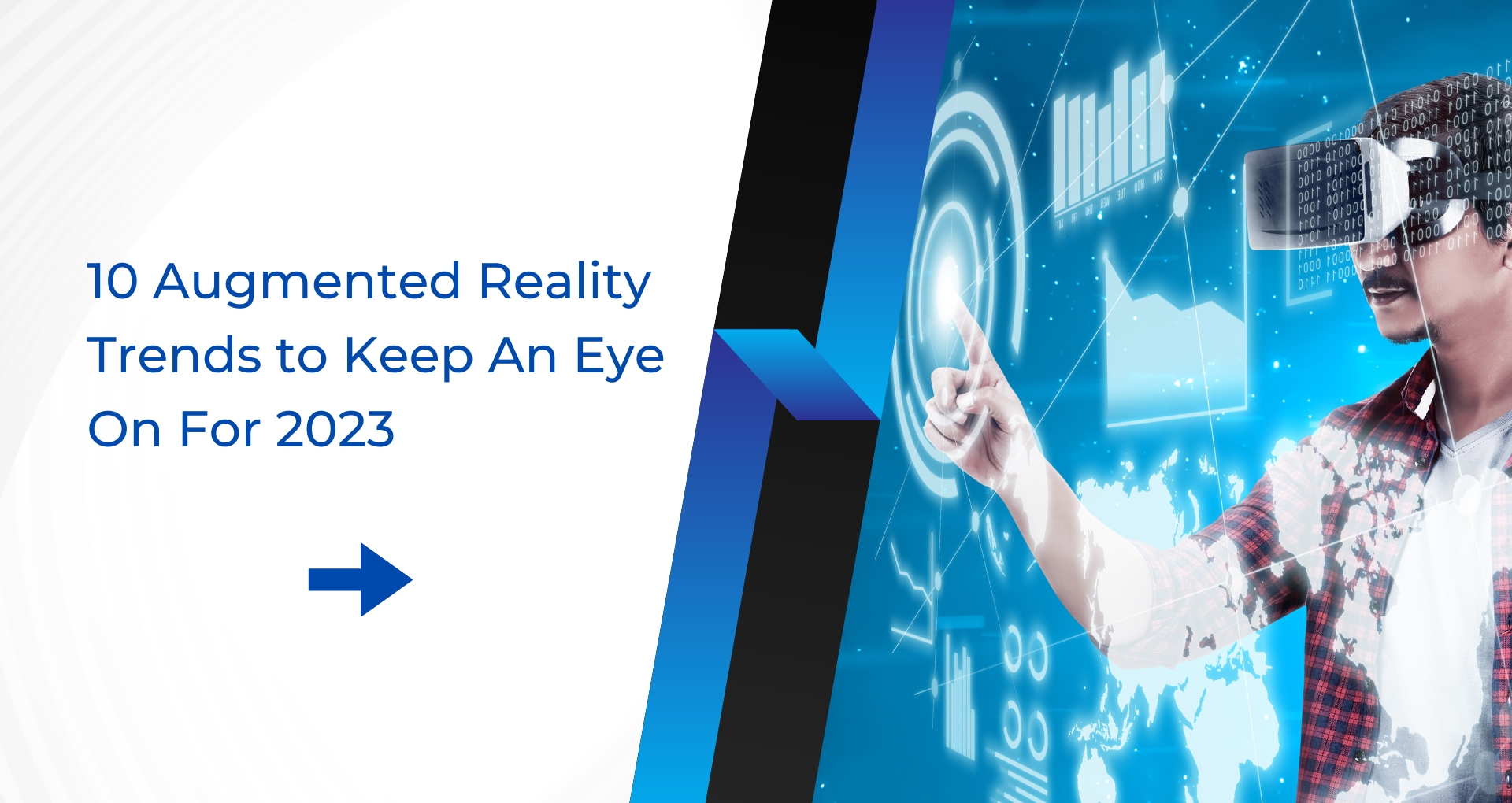
Augmented reality (AR) as a technology is no longer novel. The emergence of augmented reality now offers new user experience options. Innovations in augmented reality demonstrate how the technology is quickly upending a number of sectors, including healthcare, gaming, insurance, marketing, and education.
In light of this, it is not surprising that industry insiders believe AR will eventually exceed VR in the next three to five years. Additionally, a lot of companies are beginning to use application development software to utilize it for their operation.
1. Enter the Metaverse
Metaverse technologies aim to break down barriers between the virtual and real worlds, and augmented reality is a wonderful place to start. Ready Player Me and Geenee AR together to make this experience a reality. By uploading your avatar to Geenee’s Web AR Builder software, you may virtually “wear” it on camera. The program also takes into consideration the cosmetic accouterments of your Ready Player Me character, including NFT accessories.
The app’s original feature is the way users can import their existing avatar from other platforms and utilize it in augmented reality. In the future, companies could apply this technique to enhance the hybridization of online meetings. If a team member wears a VR headset while others do not, that individual can represent themselves in the meeting using an AR avatar.
2. Web AR
Web browsers power WebAR, eliminating the need for users to download any additional software. The ideal situation for accessibility is this. The most basic AR experiences are available through Web AR, which lacks many of the capabilities that native AR on mobile devices can provide. Nevertheless, Web AR may be quite helpful in some situations for straightforward experiences like face filtering, altering the color of items or hair, replacing backgrounds, and creating basic 3D objects. Web AR enables easier virtual try-on experiences. Many companies, like L’Oréal and Maybelline, utilize them for their cosmetic goods. Web AR may become one of the most significant methods to interact with the world even though it isn’t particularly strong at the moment.
3. Synthesis of Artificial Intelligence and Augmented Reality
Given AR’s requirements, it is not surprising that AI and AR complement one another effectively. Complex algorithms must be used to understand data from environmental sensors. Artificial intelligence can speed up and improve the accuracy of that procedure compared to a model developed only by humans.
One application for the formation of AR and AI is automatic design. An example of this technology in use is the app SketchAR. Using this software, users may doodle at will in AR. They can also use an AI to draw for them, though. Structures may be created swiftly by AI. This demonstrates how Artificial Intelligence (AI) systems may create objects in 3D space utilising the real world as their source environment. This may suggest that AI may ultimately be able to create buildings for real-world usage.
4. Cross-Platform AR
Cross-platform app creation is a major challenge for AR development. The unfortunate fact that cross-platform applications will undoubtedly fall short of native ones’ actual capacity is another. Cross-platform apps, however, may be of extremely high quality if the proper measures are followed. Cross-platform augmented reality is simpler to build and can shorten the time to market. Appearance and productivity, however, might suffer.
In general, it is preferable to keep an app native if it is very complicated and requires full use of native functionality. Cross-platform will work just fine if the software is basic and doesn’t require a lot of performance, though. Building cross-platform applications, enhancing the value of a product, and allowing you to concentrate on other facets of your business are all possible by working with an augmented reality development firm.
5. Marketing via Augmented Reality
In the field of marketing, augmented reality has a wide range of uses. For instance, you can differentiate yourself from the competition and provide potential clients a brand-new and interesting way to learn more about your business by incorporating interactivity into marketing materials like business cards. Businesses that want to give their consumers more thorough and feature-rich guidelines and documentation frequently opt for AR manuals. In addition to enabling the engaging delivery of information, augmented reality (AR) also considerably enhances user experience without requiring the customer to expend a lot of effort to learn one or more mechanisms.
6. AR Eyewear
With each year that goes by, comfortable and user-friendly AR glasses appear to be moving closer to becoming a reality. The projected mixed reality headgear for Meta, now known as Cambria, is one of the newest products that is still in the works. It seems that Cambria isn’t the miraculous treatment that everyone had anticipated for as a consequence. It could be a first step in the right direction, though. Integrating AR lenses with a user interface and relying on eye tracking, connectivity, and technology makes the augmented reality experience possible.
7. Interior and exterior navigation
Indoor navigation is now considerably more practical than it was in the past because to the development of technologies like Bluetooth Low Energy (BLE) antennae, Wi-Fi RTT, and ultra-wideband (UWB). Displaying AR instructions in big interior spaces like distribution facilities, shopping malls, and airports is one of this technology’s most practical uses.
A distribution center employee may utilize augmented reality interior navigation to locate a specific item in their warehouse, much as a store visitor might. Even if glasses with AR capabilities that are comfortable and inexpensive aren’t quite there yet, the potential for commercial uses of AR in retail, distribution facilities, and other industries is there.
8. Shopping Experiences
In response to the COVID-19 epidemic, numerous inventions were required to extend experiences to online buyers. There was an explosion of virtual try-on solutions as a result. AR technology is being aggressively used by brands to enhance the online purchasing experience. Smart mirrors are a terrific method to improve the in-store experience and lighten the strain on fitting rooms as quarantine lockdowns have ended and people have started to return to reality and mortar establishments. Customers may approach smart mirrors in-store and try on clothing using cutting-edge AR technologies that are not yet accessible on smartphones.
9. Healthcare
By providing hands-free solutions offered by MR/AR and IA-based diagnostic tools, augmented reality and AI will, according to Deloitte Research, alter the conventional healthcare business paradigm. For instance, the Microsoft Hololens 2 can provide the surgeon with information while letting them utilize both hands for the surgery. Additionally, telesurgery applications and mental health apps that aid individuals in maintaining psychological equilibrium might benefit from augmented reality. For instance, tools like drawing and annotation capabilities on the 3D screen may greatly improve and simplify doctor-patient communication. Tools for remote assistance can also assist physicians in supporting their patients and cutting down on downtime.
10. Auto industries and augmented reality
There are several uses for augmented reality that the car sector may benefit from. Augmented reality, which uses a heads-up display to highlight on-road items (HUD), is one of the more intriguing and upcoming technologies in this field. This can help keep drivers’ attention on the road while also alerting them to risks and GPS instructions. In addition to providing pleasure and information, augmented reality is used in applications like 3D automobile manuals.
A driver’s heads-up display can highlight empty parking spots with the use of a 5G connection. The wealth of information obtained from this can optimize the layouts and operations of parking facilities like parking lots and garages.
Augmented Reality’s Future
The industry anticipates that augmented reality will reach $97.76 billion in 2028, making it evident that augmented reality is the future for many businesses.Businesses that respond to today’s difficulties in novel and creative ways will decide that future. Businesses will be far better equipped to compete against their rivals if they give their customers exceptional AR experiences.
In order to increase conversions and provide your consumers with a more engaging experience, get in touch with Versatile Mobitech for cutting-edge AR app development!
Feel free to get in touch with us:
Email: sales@versatilemobitech.com
Visit our website: https://www.versatilemobitech.com/
Like us on Facebook: https://www.facebook.com/versatilemobitech
Subscribe
Subscribe to our blog and never miss our latest updates

Mobile App Development Company Dallas, Texas

Best Mobile App Development Company in UAE

DeepSeek – Everything You Need to Know About This

Why Your Company Website Should Be Responsive

 +91 970 193 0011
+91 970 193 0011 +1 934 221 7261
+1 934 221 7261 +971 55 316 6156
+971 55 316 6156




